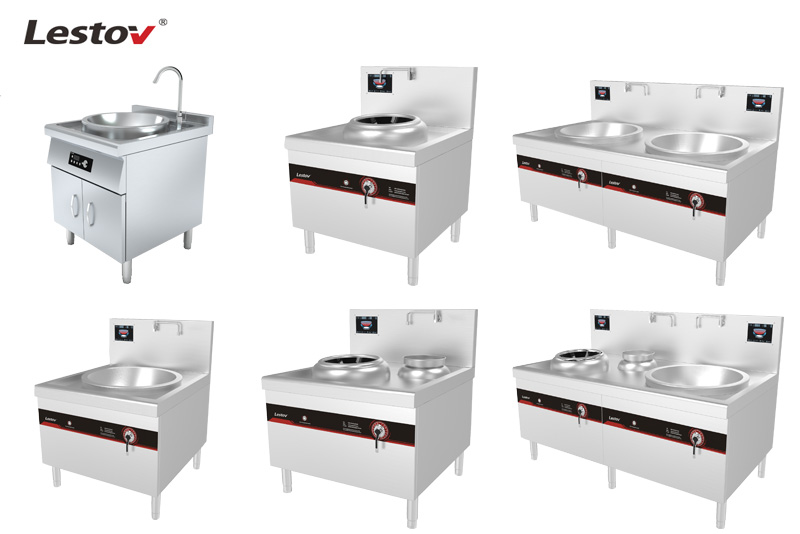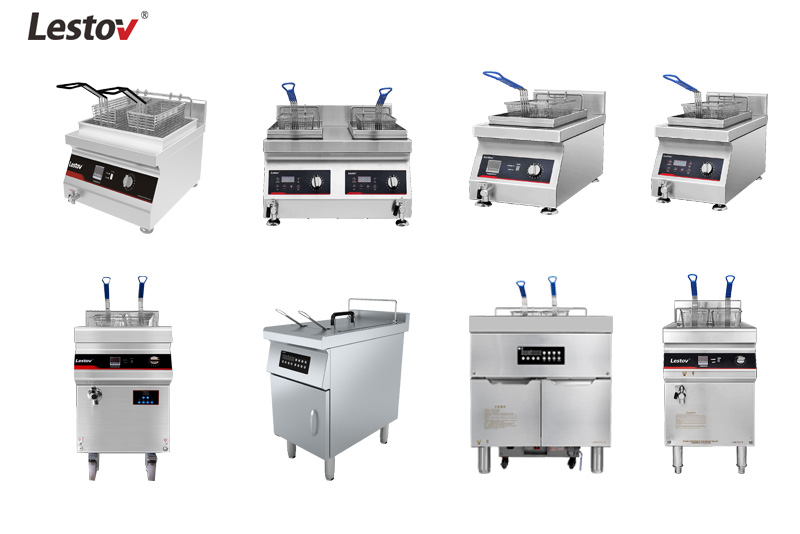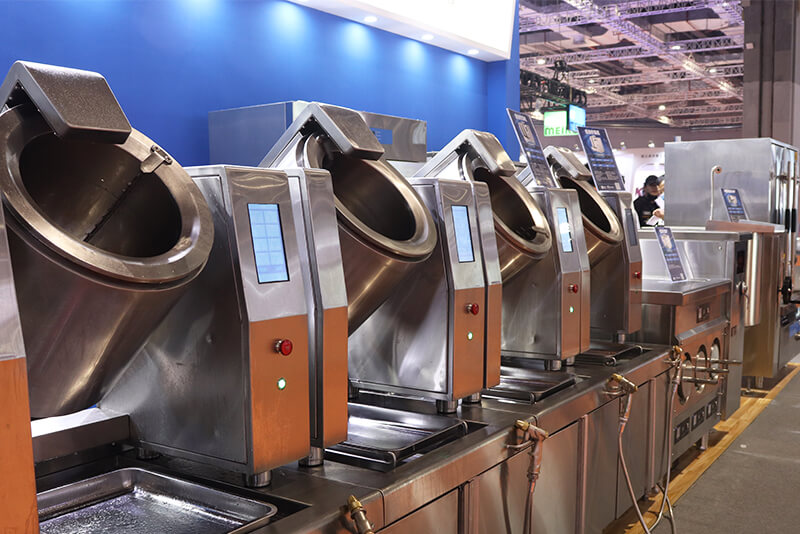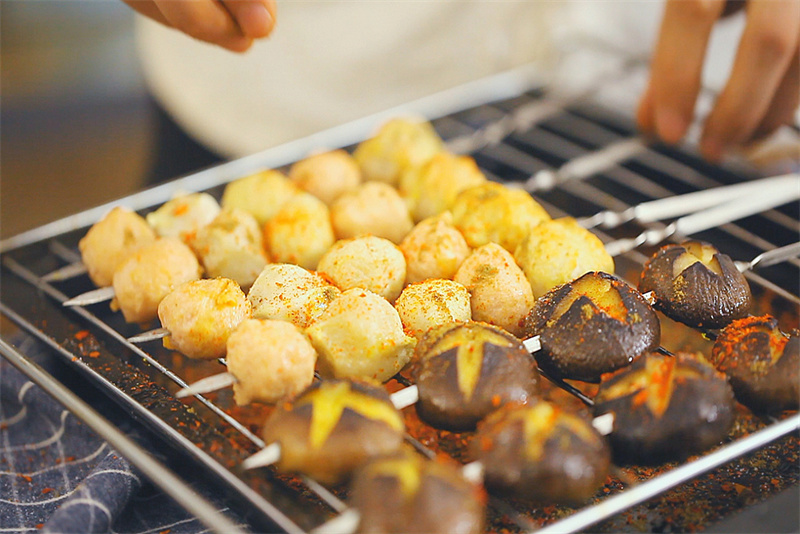In the catering industry, efficiency and precision are crucial. Commercial induction fryers are gradually becoming…

10 factors to consider when purchasing a commercial induction cooker
As an essential appliance in modern kitchens, commercial induction cookers are widely used in catering, hotels, school canteens, and other places. Compared with traditional gas stoves, commercial induction cookers have the advantages of high efficiency, energy saving, safety, and environmental protection.
However, faced with a wide variety of commercial induction cookers on the market, how can you choose the product that best suits your needs? This article will discuss in detail the 10 key factors to consider when purchasing a commercial induction cooker.
1. Power and heating efficiency
(1) Power selection
The power of a commercial induction cooker directly affects its heating speed and cooking efficiency. Typical power ranges range from 3kW to 15kW. The appropriate power should be determined based on actual needs. For example, a fast-food restaurant may need a high-power induction cooker for fast cooking, while a coffee shop may only need a medium-power device.
(2) Heating efficiency
Heating efficiency is an essential indicator for measuring the performance of an induction cooker. A high-efficiency induction cooker can quickly convert electrical energy into heat energy, reducing energy waste. When choosing, you should pay attention to the product’s thermal efficiency parameter, which is usually expressed as a percentage.
2. Stove size and number
(1) Stove size
The size of the stove determines the size of the pots that can be placed. Standard stove sizes include 30 cm, 40 cm, 50 cm, etc. When choosing, you should determine the appropriate stove size based on the size of the commonly used pots and cooking needs.
(2) Number of stoves
Commercial induction cookers come in different configurations, such as single, double, and multiple ovens. When choosing, you should determine the number of stoves based on the kitchen space and cooking needs. For example, a large restaurant may need multiple ovens to improve cooking efficiency, while a small cafe may only need a single or double oven.
-
 Double Burners Commercial Induction Hobs LT-B300II-E105
Double Burners Commercial Induction Hobs LT-B300II-E105 -
 Automatic Cooking 6 Burners Commercial Induction Cooker LT-B300VI-E235
Automatic Cooking 6 Burners Commercial Induction Cooker LT-B300VI-E235 -
 Restaurant 6 Burners Induction Built-in Soup Cooker LT-D300VI-B105
Restaurant 6 Burners Induction Built-in Soup Cooker LT-D300VI-B105 -
 Four Zones 2 Burners Commercial induction Wok Cooker LT-B300VI-B105
Four Zones 2 Burners Commercial induction Wok Cooker LT-B300VI-B105 -
 Double Burners Commercial Induction Hob with Electric Stove LT-B300II+DTLII
Double Burners Commercial Induction Hob with Electric Stove LT-B300II+DTLII -
 Upright Commercial Induction 3 Wok Hob with Pasta Boiler LT-B290II+B300+ZML
Upright Commercial Induction 3 Wok Hob with Pasta Boiler LT-B290II+B300+ZML -
 Upright Commercial Induction Wok Hob with Electric Cooker
Upright Commercial Induction Wok Hob with Electric Cooker -
 Tabletop 4 Zones Intergrated Commercial Induction Hob LT-TBZ300IV
Tabletop 4 Zones Intergrated Commercial Induction Hob LT-TBZ300IV -
 Upright 4 Zones Commercial Induction Cooker with Stand LT-B300IV
Upright 4 Zones Commercial Induction Cooker with Stand LT-B300IV
3. Temperature control and regulation
(1) Temperature range
The temperature range of a commercial induction cooker determines its applicability. Standard temperature ranges range from 50°C to 300°C. When choosing, you should determine the appropriate temperature range based on cooking needs. For example, frying requires a high temperature, while keeping warm requires a low temperature.
(2) Temperature regulation
Precise temperature regulation can improve cooking results. When choosing, you should pay attention to the temperature regulation method of the induction cooker, such as knobs, touch screens, digital displays, etc. Touch screens and digital displays usually provide more precise temperature control.
4. Safety performance
(1) Overheat protection
The overheat protection function can prevent the induction cooker from being damaged or causing a fire due to overheating. When choosing, make sure that the product has a reliable overheat protection mechanism.
(2) Leakage protection
The leakage protection function can prevent safety accidents caused by leakage. When choosing a product, make sure that it has a leakage protection device and complies with relevant safety standards.
(3) Child lock
The child lock function can prevent children from causing danger due to misoperation. When choosing, consider whether this function is needed based on actual needs.
5. Energy efficiency rating
(1) Energy efficiency standard
The energy efficiency rating is an essential indicator for measuring the energy consumption of induction cookers. When choosing, pay attention to the product’s energy efficiency rating, which is usually expressed in star ratings. The higher the star rating, the higher the energy efficiency.
(2) Energy saving function
Some high-end commercial induction cookers have energy-saving functions, such as automatic shutdown and timed shutdown. When choosing, consider whether these functions are needed based on actual needs.
6. Material and durability
(1) Cooktop material
The cooktop material directly affects the durability and cleaning difficulty of the induction cooker. Common cooktop materials include ceramic, microcrystalline glass, stainless steel, etc. Microcrystalline glass cooktops usually have good heat resistance and are easy to clean.
(2) Body material
The body material determines the overall durability of the induction cooker. Common body materials include stainless steel and aluminum alloy. Stainless steel bodies usually have good corrosion resistance and durability.

7. User interface and user experience
(1) User interface
The design of the user interface directly affects the user experience. When choosing, you should pay attention to the layout of the user interface, button sensitivity, display clarity, etc. Touchscreen user interfaces usually provide a better user experience.
(2) Preset programs
Some high-end commercial induction cookers have a preset program function that can automatically adjust the temperature and time to simplify the cooking process. When choosing, you should consider whether this function is needed based on actual needs.
8. Maintenance and cleaning
(1) Cleaning difficulty
The cleaning difficulty of a commercial induction cooker directly affects its user experience. When choosing, you should pay attention to the ease of cleaning the stove surface, such as whether it has an anti-stick coating and is easy to disassemble.
(2) Maintenance requirements
Different induction cookers have various maintenance requirements. When choosing, you should understand the product’s maintenance cycle and methods to ensure that daily maintenance can be carried out conveniently.
9. Brand and after-sales service
(1) Brand selection
Choosing a well-known brand of commercial induction cooker can usually result in better product quality and after-sales service. You can learn about the brand’s reputation by checking the brand history and customer reviews.
(2) After-sales service
After-sales service includes installation guidance, maintenance support, spare parts supply, etc. When choosing, you should ensure that the brand can provide timely and professional after-sales service.
(3) Warranty policy
Warranty policy is an essential indicator for measuring product quality and after-sales service. When choosing a product, you should understand its warranty period and scope to ensure sufficient protection.
10. Price and budget
(1) Initial cost
The initial cost of a commercial induction cooker includes equipment price, installation fee, etc. When choosing, you should consider performance and cost comprehensively to avoid simply pursuing low prices.
(2) Operating costs
Operating costs include energy consumption, maintenance costs, and other expenses. Although a high-efficiency induction cooker has a high initial cost, it can significantly reduce energy consumption and maintenance costs in long-term operation.
(3) Life cycle cost
Life cycle cost is the sum of initial cost and operating cost. When choosing an induction cooker, consider the life cycle cost and choose the product with the best cost performance.
Conclusion
When purchasing a commercial induction cooker, you need to consider multiple factors such as power and heating efficiency, size and number of stove surfaces, temperature control and adjustment, safety performance, energy efficiency rating, material and durability, operating interface and user experience, maintenance and cleaning, brand and after-sales service, price and budget.
Through comprehensive evaluation and reasonable selection, you can not only meet your cooking needs but also improve kitchen efficiency, reduce operating costs, and extend the life of the equipment. The detailed analysis in this article can provide a valuable reference for your induction cooker selection.



This Post Has 0 Comments